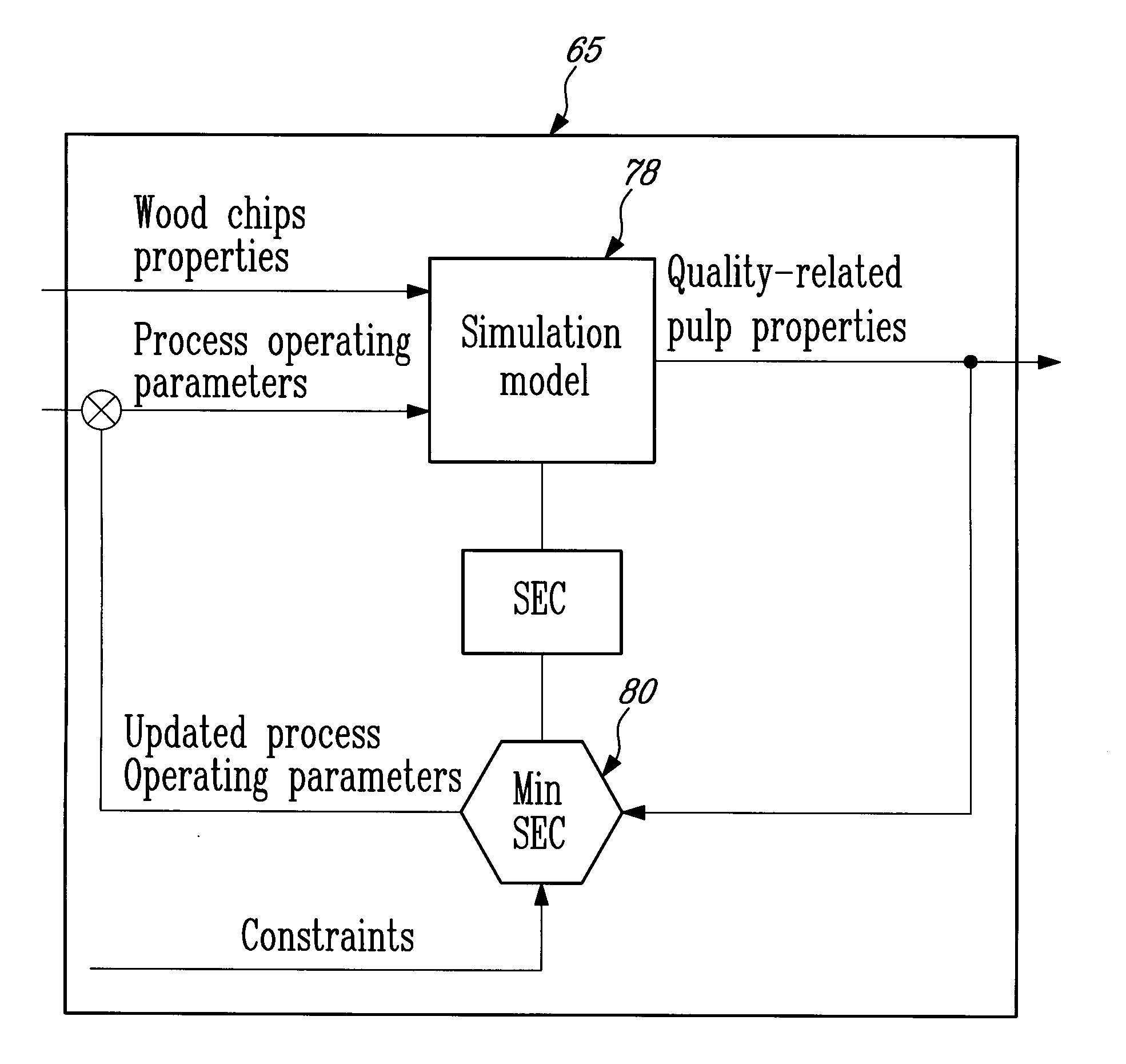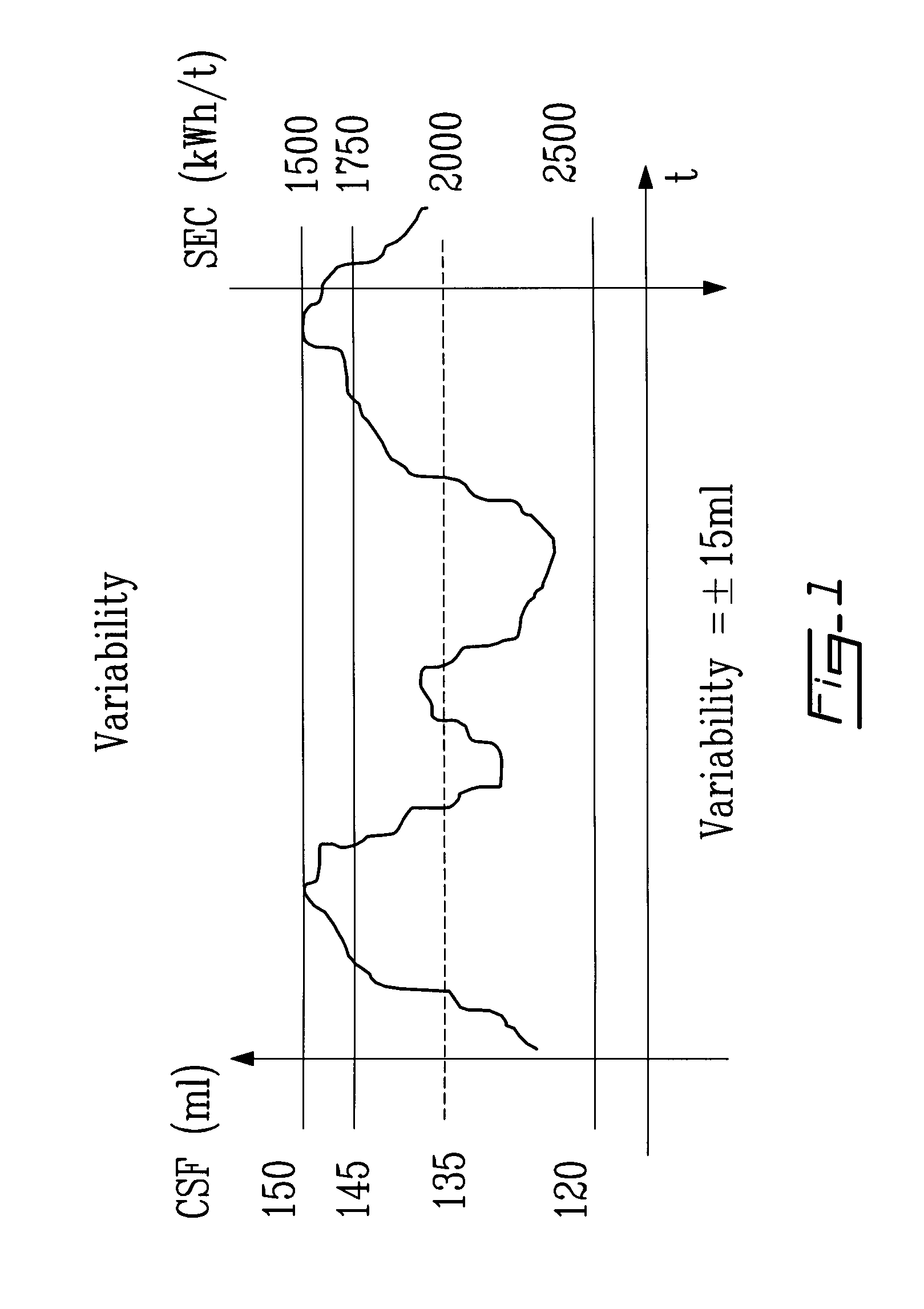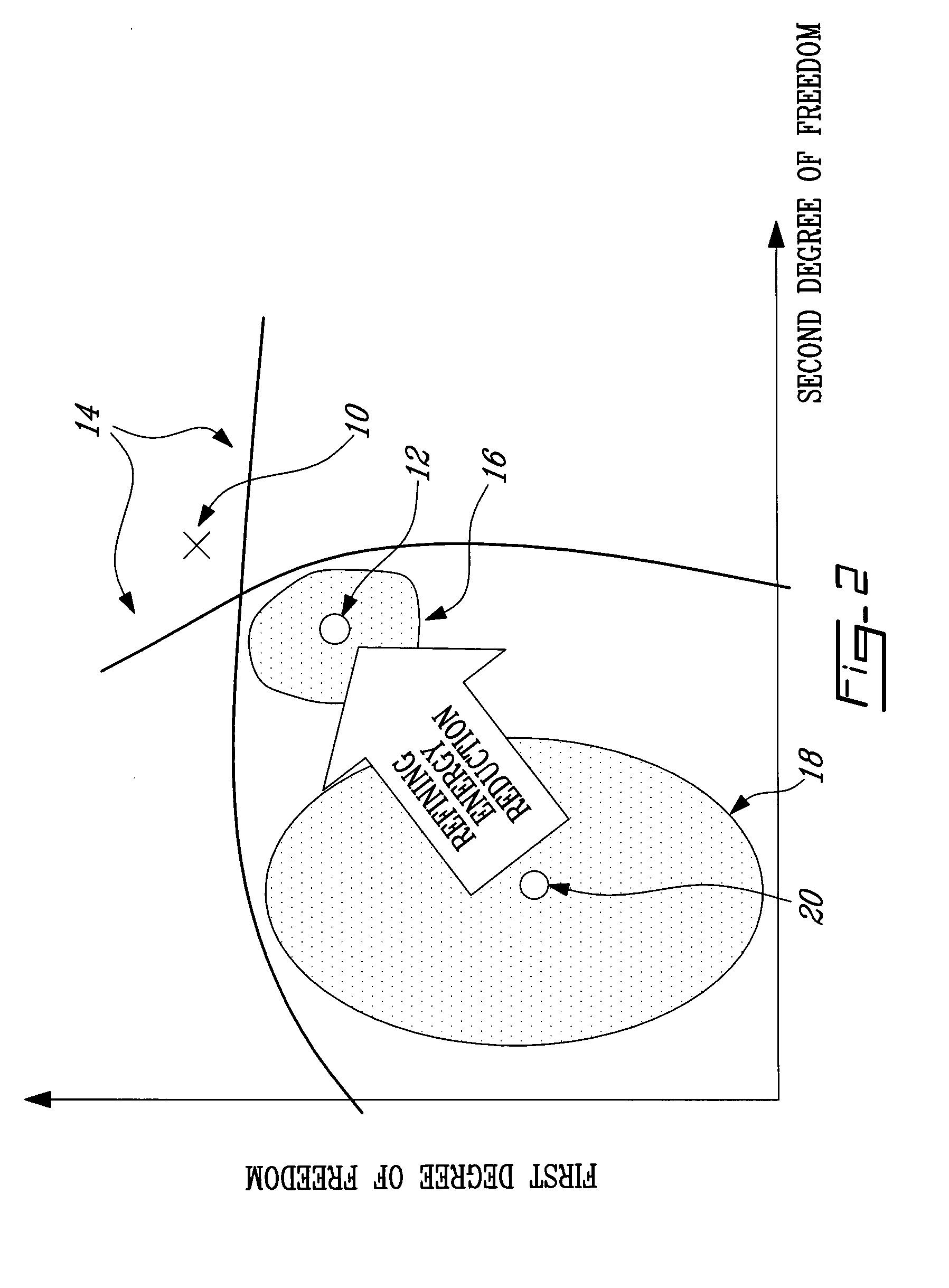System and method for optimizing lignocellulosic granular matter refining
a technology of lignocellulosic granular matter and optimization method, which is applied in the direction of position/direction control, program control, analogue computers, etc., can solve the problems of major energy consumption and variation of chip quality
- Summary
- Abstract
- Description
- Claims
- Application Information
AI Technical Summary
Benefits of technology
Problems solved by technology
Method used
Image
Examples
Embodiment Construction
[0034]Variations in properties of lignocellulosic raw matter can lead to large deviations in both quality of pulp produced therefrom as well as energy used to obtain it. In the TMP process, variations in wood chip properties lead to change in the mass flow rate of the chips fed into the refiner. Experiences have shown that for a normal operating condition, 30% of disturbances affecting the pulping process may be caused by these variations. Referring to the example shown in the graph of FIG. 1, CSF exhibits a variability of ±15 mL with reference to CSFmean=135 mL, while SEC exhibits a variability of ±1500 kWh / t with reference to SECmean=2000 kWh / t. If the SEC variation could be minimized, it would be possible to produce a pulp of higher quality, e.g. CSFmean=145 mL or approaching its upper limit (150 mL) for a same refining energy consumption, or to produce a pulp with same CSFmean value (135 mL) while consuming less energy. Usually, at the refiner stages, energy consumption does not...
PUM
 Login to View More
Login to View More Abstract
Description
Claims
Application Information
 Login to View More
Login to View More - R&D
- Intellectual Property
- Life Sciences
- Materials
- Tech Scout
- Unparalleled Data Quality
- Higher Quality Content
- 60% Fewer Hallucinations
Browse by: Latest US Patents, China's latest patents, Technical Efficacy Thesaurus, Application Domain, Technology Topic, Popular Technical Reports.
© 2025 PatSnap. All rights reserved.Legal|Privacy policy|Modern Slavery Act Transparency Statement|Sitemap|About US| Contact US: help@patsnap.com



